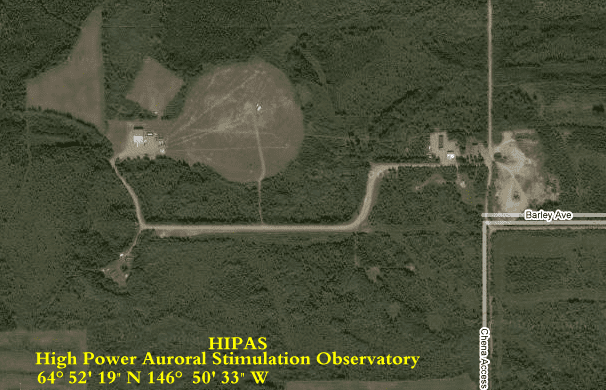 | ||
The HIPAS (HIgh Power Auroral Stimulation) Observatory was a research facility intended to study the ionosphere and its influence on radio communications.
It was operated by the UCLA plasma physics laboratory from 1986 through 2007. A unique capability at that time, it could radiate 70 MW ERP at either 2.85 MHz or 4.53 MHz. These frequencies are close to a multiple of 2 and 3 of the electron gyro-frequency at ionospheric altitudes. Sending a pulse of HF-radio waves upward could accelerate the electrons in the ionosphere. Somewhat like waves on the ocean, the character of the ionosphere could be inferred from the backscatter signal. Other experiments attempted to combine RF and visible excitation where the latter probed metal ions such as sodium.
The HIPAS facility also used a LIDAR (LIght Detection And Ranging) instrument. Other projects included:
The High Frequency Active Auroral Research Program (HAARP) is a similar facility funded jointly by the US Air Force and US Navy.
The HIPAS facility was shut down and much of the equipment sold as surplus in the Spring of 2010.[1][2]
